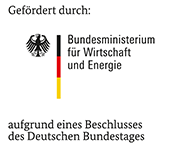15509 N/2

Hochtemperaturofen in Betrieb
| Period: | 2008-09-01 to 2010-12-31 |
|---|---|
| Funder: | Federal Ministry for Economics and Technology (BMWI, Germany) via AiF |
| Project Manager: | Dr. Rick Durham |
| Research Group: | High Temperature Materials |
Due to its high application rates, arc spraying has been employed for many decades in applying large scale metallic corrosion- and abrasion-resistant coatings. In comparison to other spraying processes, arc spraying offers particular advantages such as high coating capacity in conjunction with low process and capital outlays. This economic potential has led to growing interest in small and medium sized enterprises to substitute current coating techniques such as overlay welding, atmospheric plasma coating (APS) and high velocity oxy-fuel (HVOF) coatings with arc sprayed coatings. Due to the large surface areas that can be applied using arc spraying, power stations and waste incineration are particularly interesting fields for coating application.
The predominating temperatures of over 300°C and the reactive HCl and KCl containing atmospheres in waste incinerators lead to increased corrosion rates due to the formation of molten phases and/or "chlorine induced corrosion" of the construction materials.
Emphasis on materials research in previous years has been the development of wear- and high temperature corrosion-resistant coatings. The aim of the present investigation is to develop the arc spraying process into a form that is suitable for the application of corrosion resistant coatings to waste incineration equipment. The development of new alloy compositions for coating materials with increased corrosion resistance based on iron, chromium and silicon offers enormous potential for the improvement of coating technology. The development of cored wires for arc spraying is based on investigations from overlay welding and plasma spraying techniques, however, characteristics of the process and coating development need to be considered. Due to the economic advantages of shortened downtimes as well as extended maintenance intervals, arc spraying has the potential to establish itself well as a coating application in the waste incineration industry.
back
Das IGF-Vorhaben Nr. 15509 N/2 der Forschungsvereinigung DECHEMA e.V., Theodor-Heuss-Allee 25, 60486 Frankfurt am Main wurde über die AiF im Rahmen des Programms zur Förderung der industriellen Gemeinschaftsforschung (IGF) vom Bundesministerium für Wirtschaft und Energie aufgrund eines Beschlusses des Deutschen Bundestages gefördert.
PD Dr. Mathias Galetz
Tel.: +49 69 / 7564-397
E-mail: mathias.galetz
Final Report (pdf, 6.9 MB, in German)